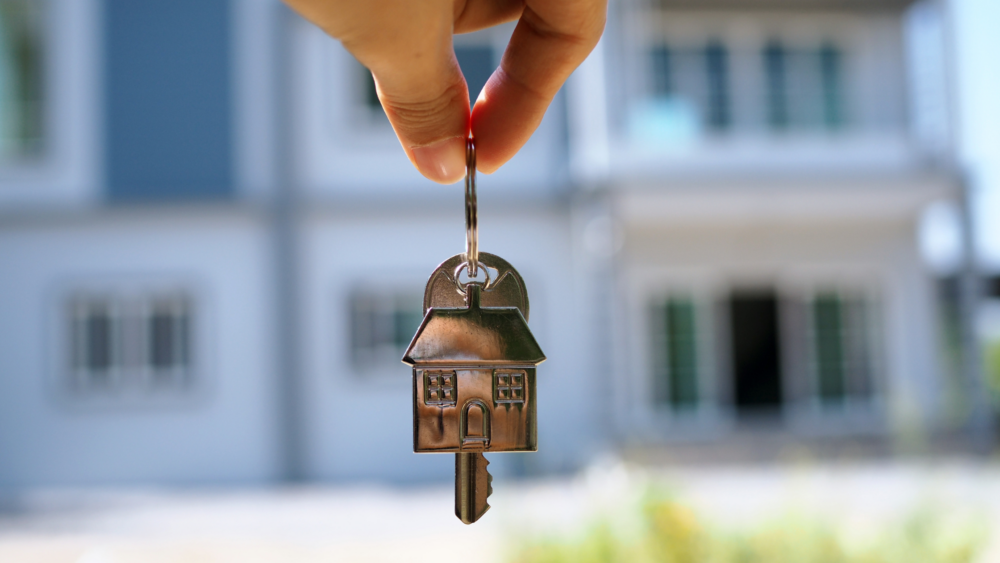Imagine you just locked in the purchase of your dream home. You’re standing on the brink of a new chapter, and Homeowner’s Insurance is your safety net. It’s that trusty sidekick ensuring your peace of mind as life throws curveballs at your castle.
Today, I’m peeling back the curtain to show you how this unsung hero works tirelessly behind the scenes. From shielding against storm damage to stepping up when accidents invite medical bills, it’s got more roles than a Swiss Army knife.
You’ll soon discover not only how homeowner’s insurance guards your wallet from fires or theft but also why choosing coverage wisely can mean sailing smoother through homeownership waters—letting you sleep soundly even when nature does its worst.
The Fundamentals of Homeowner’s Insurance
Understanding homeowner’s insurance is like having a safety net for your castle. It’s not just about safeguarding the structure; it’s about protecting everything within its walls, including you and your loved ones. When disaster strikes—whether it be fire, theft, or Mother Nature in a fury—you’ll want to know that what you cherish won’t become a financial ruin.
What Homeowner’s Insurance Covers
A standard homeowner’s policy is more than a piece of paper—it’s peace of mind in print. Think of dwelling coverage as the guardian of your home itself, ready to step up if hail decides to play drum solos on your roof or if flames fancy dancing in places they shouldn’t. But homes are more than bricks and beams; personal property coverage ensures that even if your treasured possessions face an unexpected swan song, their value doesn’t vanish with them.
Life can throw curveballs harder than any fastball Randy Johnson ever pitched—and when those cause harm to others on your turf? That’s where liability coverage comes into play faster than an outfielder catching a fly ball. And should someone get injured while snagging said hypothetical ball? Medical payments coverage steps up like an all-star player making sure medical bills don’t turn into mountains.
The Significance of Being Insured
You might think “it won’t happen to me,” but let me paint you another picture: A rogue barbecue flame decides today’s the day it makes its grand escape—or worse yet—a thief thinks he hit jackpot at Casa de You. Now imagine watching these horrors unfold without any backup—that feeling alone underscores why being insured isn’t just smart; it’s essential for anyone calling themselves homeowners.
Your safe haven deserves protection against life’s what-ifs because sometimes fairy tales have villains too—and they aren’t always followed by happily-ever-afters without proper preparation and insurance management tools at hand.
Coverage Details and Policy Management
Understanding the ins and outs of homeowner’s insurance is like knowing the secret handshake to a club – it gives you access to protection for your castle. When disaster strikes, whether it’s a rogue barbecue or an ornery oak tree taking aim at your roof, dwelling coverage steps in like a superhero, shielding the structure of your home.
But what about all the treasures inside? That’s where personal property coverage comes into play. It covers everything from that vintage guitar collection to Aunt Edna’s china plates. And if someone slips on those stairs you’ve been meaning to fix and faces medical bills? Liability coverage has got your back, offering financial protection faster than you can say “lawsuit”. For smaller bumps and bruises happening under your roof, there’s also medical payments coverage – because even superheroes need a band-aid now and then.
Sometimes life hits pause – say when flood damage sends you packing temporarily. Additional living expenses coverage helps keep things rolling by covering hotel stays or temporary rentals so that life doesn’t miss a beat while repairs are made.
If managing this myriad of coverages sounds daunting as climbing Everest backwards, fret not. ‘My Account’ services offered by insurers such as GEICO let homeowners wield control over their policies with just clicks right here. Here they can adjust policy limits or simply learn more through resources available at their information center, ensuring every base is covered without breaking into nervous sweats each time Mother Nature glares menacingly at one’s abode.
Selecting the Ideal Homeowner’s Insurance Plan
Finding that sweet spot in a homeowner’s insurance policy can feel like hitting the jackpot. But, let’s face it, sifting through policy details isn’t exactly as thrilling as Vegas. It’s more about safeguarding your sanctuary without breaking the bank.
Factors to consider when choosing a policy
Picking out the right coverage is no small task; you’ve got to weigh options and crunch numbers. Think of it like tailoring a suit—it should fit just right. Start by assessing your property value and then square that with replacement cost estimates. After all, if calamity strikes, you’ll want enough dough to rebuild your home from scratch.
Next up: personal property protection. Imagine turning your house upside down—everything that falls needs coverage too. And don’t forget liability insurance; it’s what stands between you and potential lawsuits over accidents on your turf.
Evaluating financial strength of insurance companies
A robust company backing up your claim? Now that’s peace of mind. Financial stability in an insurer means they won’t flinch when disaster hits and checks need signing. Make sure they’re solid as granite before committing.
Comparing quotes and getting a homeowners insurance quote online
No one wants to overspend for coverages they might not even use — talk about buyer’s remorse. So get this: comparing quotes online could save you some serious greenbacks while ensuring adequate protection against mishaps at home or legal squabbles alike.
Gone are the days of endless phone calls with agents; now just tap away on sites offering quick homeowners’ insurance quotes online, making shopping around for policies faster than ordering takeout (and way less messy).
Navigating Claims and Support Services
Picture this: a storm hits, and you’re left with a damaged roof. You need to file an insurance claim, but where do you start? GEICO’s Report a Claim service makes it straightforward. Just hop online or use their app; your road to recovery begins with just a few clicks.
Filing claims can be daunting, especially when documenting property damage and losses is involved. Be meticulous—every detail counts. Take photos, jot down dates, note every item affected—it all helps in dealing with the claims process. Your insurer will thank you for being thorough as they assess what coverage options apply.
If ever there’s confusion during the ordeal—or if roadside help becomes necessary—remember that services like GEICO’s Emergency Road Service (ERS) are designed for support when things go sideways on your commute home or during travels.
Documenting Property Damage and Losses
You’ve got property damage; let’s tackle it head-on. First off, don’t toss anything until your adjuster sees it—that soggy couch might just be part of your claim. Make lists of damaged items along with their age because details matter when seeking fair compensation under homeowners insurance cover.
Your next step? Get those estimates rolling in from contractors on repair costs—the foundation to making sure personal property gets its due respect financially speaking after suffering through events like flood damage.
Dealing With Claims Process
The aftermath of filing a claim isn’t always smooth sailing—but hang tight. There may be back-and-forth discussions about policy limits or replacement cost valuations before reaching agreement territory on covered loss settlements—and that’s okay.
Sometimes living expenses rack up if staying elsewhere is needed while repairs are underway; check into how additional living expenses coverage fits into this puzzle within your policy terms so unexpected hotel stays don’t break the bank unexpectedly post-disaster scenario striking close to home base operations literally.
Proactive Measures for Home Safety & Reduced Premiums
Savvy homeowners know that safety upgrades not only protect their nests but can also chirp sweet tunes of savings on insurance premiums. Take the humble burglar alarm—this vigilant guardian may help you sleep like a baby at night and snag some cost cuts from your insurer.
Enhancing Security to Lower Costs
Home maintenance does more than keep your abode spick-and-span; it impacts insurance premiums too. Regular upkeep, especially in the security department, is a golden ticket to potential discounts. Think beyond deadbolts and consider smart tech like monitored burglar alarms—a favorite among insurers for its proactive stance against intruders.
The benefits for homeowners who invest in these measures? A double whammy: beefed-up protection and often a nifty reduction in what they shell out annually for coverage options.
Digging deeper into home insurance policy details reveals that most companies are gung-ho about rewarding customers who show an initiative towards mitigating risks. If your house has had fewer claims because you’ve installed smoke detectors or reinforced windows, then chances are you’ll see friendlier figures when renewing policies or shopping around with other insurance providers.
To get started, ring up your local agent or hit the web for a quick homeowners insurance quote online. Ask pointed questions about how different security enhancements could impact rates. After all, if there’s one thing better than enjoying peace of mind from robust defenses against calamities and crooks alike—it’s pocketing extra cash while doing so.
Maximizing Your Current Policy Benefits
Getting the most out of your homeowner’s insurance isn’t just smart; it’s essential. It starts with a thorough policy review, ensuring every aspect of your coverage is up-to-date with your home’s evolving needs. Let’s not beat around the bush—life changes fast and so does the value of our homes.
Periodic Policy Review
Sit down at least once a year to assess whether you’ve got enough juice in your policy to cover life’s curveballs. Maybe you’ve added a deck or upgraded that 70s-style bathroom (finally). These improvements can bump up your home’s value, meaning it might be time for reviewing your current homeowner’s insurance policy. Don’t let complacency cost you when it matters most.
If new gadgets or heirlooms have found their way into your abode since last checking, they need protection too. That signed baseball card collection? Priceless—at least sentimentally—and likely in real dollars as well. This regular check-up ensures no gap between what you own and what’s covered.
Adjusting Coverage Limits
You may find yourself wondering if those coverage limits still fit like they used to or if they’re now squeezing tighter than jeans post-Thanksgiving dinner. The truth is, reassessing adequacy of coverage limits isn’t just prudent—it could save financial heartache down the line by making changes to your policy as needed based on fresh valuations or acquisitions.
Dig into potential updates with an easy visit online using GEICO Account Creation, where managing adjustments becomes less chore-like and more peace-of-mind inducing.
Weigh these choices against potential risks: are pricier premiums worth shelling out for higher coverage after snagging that original Warhol print? Or maybe downsizing has left rooms emptier and valuables fewer—could decreasing limits better align costs with reality?
In either case, remember shopping around for better coverage shouldn’t feel like wandering through a maze blindfolded; compare options methodically but don’t linger endlessly over decisions—the goal here is staying protected without overpaying.
Comprehensive Protection Against All Odds
Sometimes, life throws a curveball so unexpected that even your standard homeowner’s insurance might not cover the bases. That’s where umbrella policies step in to bat, providing extended liability protection beyond what typical policies offer. Think of it as an extra layer of financial armor for those particularly rainy days.
Understanding Umbrella Policies
An umbrella policy is like having backup for your backup. It kicks into action when you’ve maxed out the limits on your regular coverage options—whether we’re talking about personal liability or property damage claims. And with lawsuit settlements soaring higher than skyscrapers these days, this additional shield can be a game-changer in safeguarding your assets.
This type of optional coverage isn’t just for the wealthy; it’s also smart planning for any homeowner who wants peace of mind from potential risks lurking around every corner. Imagine if someone gets hurt on your property and sues you—your homeowners insurance will help up to a point but after that? You’d wish you had an umbrella policy covering those storm clouds overhead.
Umbrella policies don’t discriminate by size either—they’re here to protect both modest bungalows and sprawling estates alike because accidents don’t care about zip codes or floor plans. So while installing burglar alarms may earn you brownie points towards lower premiums, there’s no substitute for solid liability protection when misfortune strikes hard.
To start weaving this safety net beneath whatever life drops down, visit GEICO Account Creation. There, GEICO opens its doors wide open letting you peek at their vast array of insurance products tailored just right—and yes—that includes stellar customer service that’ll make navigating through the insurance buying process feel like walking through a park (minus any falling tree branches).
Impactful Factors Influencing Your Insurance Rates
Ever wonder why your neighbor’s homeowner’s insurance might cost less than yours? It turns out, the rate you pay is as unique as your home itself. Several factors come into play when an insurance company sets your premium.
Location-Based Risk Assessment
Your abode’s GPS coordinates are more than just a way for friends to drop by. They’re also key indicators for insurers assessing risk. Living in picturesque flood zones could double as a high-stakes gamble with Mother Nature, hiking up premiums faster than floodwaters in a storm surge. But it’s not just about water; being nestled in areas prone to wildfires or severe storms can also bump up rates because of increased potential risks.
A stroll through GEICO’s Information Center, armed with questions on how location influences premiums, may shed light on this localized lottery of sorts – where playing the odds affects what you shell out each month.
The Role of Fair Plans
If traditional policies shy away from insuring your property due to its high-risk locale, state-run fair plans step into the breach like financial knights in shining armor. These plans ensure homeowners aren’t left adrift when finding coverage becomes tougher than solving a Rubik’s Cube blindfolded.
Sometimes living off the beaten path means usual insurers wave goodbye quicker than guests at an awkward dinner party—enter fair plans that often become lifesavers providing essential protection against perils when no one else will offer homeowners insurance. And while they’re typically pricier and leaner on coverage options compared to standard policies, they provide crucial financial protection nonetheless—a safety net that catches those whom fortune has placed precariously close to nature’s whimsies or other threats lurking around corner lots and cul-de-sacs alike.
Resolving Disputes & Understanding Claims Denials
If you’ve ever felt like David going up against Goliath when disputing a claim denial with your insurance company, you’re not alone. But here’s the good news: knowledge is power, and understanding the ins and outs of resolving disputes can turn the tide in your favor.
Tips for Negotiating With Insurers
Negotiation may seem daunting, but it’s all about preparation. Start by reviewing your policy limits and coverage options thoroughly; this way, you’ll know exactly what should be covered under terms like ‘property damage’ or ‘personal liability.’ If flood damage is at play and isn’t part of standard homeowners insurance policies—consider whether add-ons like flood insurance were part of your agreement.
Gather evidence to support your case—photos of property damage or repair estimates from local contractors dealing with building materials—and keep detailed records of every conversation with customer service representatives. This documentation could be crucial if things escalate beyond initial negotiations.
Appeal Process
The appeal process might feel as twisty as a plumbing system that’s seen better days, but stay focused on the end goal: fair resolution. Should an adjuster give you pushback on living expenses during home repairs or question medical bills under personal property coverage claims? Remember those are potential risks they agree to cover.
You don’t have to navigate these choppy waters solo either; seeking out advice from professionals who offer homeowners insurance guidance can illuminate parts of the process that might otherwise remain murky. And while we’d all love quick homeowners insurance quotes online without hiccups down the road—it pays (literally) to understand how policies work when actual problems arise.
In cases where disputes aren’t resolved satisfactorily through negotiation or appeals within insurers themselves—which does happen even among top-rated companies—you might consider state-run programs designed for such circumstances known as fair plans. GEICO’s Information Center can provide more details about these alternatives if traditional routes leave you high and dry.
FAQs in Relation to Homeowner’s Insurance
What company has the cheapest homeowners insurance?
The most affordable insurer varies; however, companies like GEICO often offer competitive rates. Always compare quotes.
How much should you spend on homeowners insurance?
Spend what aligns with your property’s value and risk factors. Aim for comprehensive coverage without overpaying.
What is the average cost of homeowners insurance in Ohio?
In Ohio, homeowner’s policies average around $850 yearly. But prices fluctuate based on home specifics and location.
What is the average homeowners insurance cost in Florida?
Florida’s higher risk for natural disasters means a steeper average—about $1,900 annually for homeowner’s coverage.
Conclusion
Lock in peace of mind, secure your investment. Homeowner’s insurance stands as your financial fortress against the unexpected. Grasp its significance, embrace its coverage spectrum.
Assess and compare, tailor to fit. Policy selection is a custom suit—measure it well for life’s events. Know that quality insurers align with resilience; customer service becomes the backbone.
Savings aren’t myths; they’re mastery in motion. Apply cost-cutting wisdom without skimping on security—every dollar counts when fortifying your future.
Diligence defines claims dealings; document diligently, advocate ardently. The right approach can streamline storms into solvable puzzles—a testament to thorough preparation and proactive protection.
Navigate with knowledge, armed with insights from this guide on homeowner’s insurance—and watch over what matters most. Get more resources at costguide.com.





